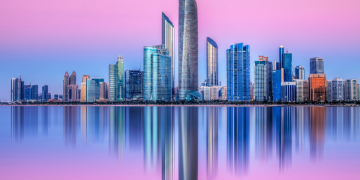Traveling is not just about visiting new places; it’s about immersing yourself in the culture, experiencing the traditions, and understanding the heart of a destination. Every location has its unique culture, customs, and way of life, and one of the most rewarding aspects of travel is the opportunity to engage with these cultural treasures. However, this experience can often be diluted when tourists fall into the trap of visiting over-commercialized spots or settling for generic, mass-market attractions.
The key to truly experiencing a destination’s culture is to step beyond the typical tourist traps and engage more deeply with the local community. So, how can you maximize your cultural experience while ensuring that you don’t get stuck in the more superficial aspects of tourism? This guide will provide practical tips and strategies for immersing yourself in authentic cultural experiences while avoiding the common pitfalls that many travelers face.
1. Do Research Before You Travel
Why It’s Important: A bit of research can go a long way in helping you avoid tourist traps and focus on the authentic cultural aspects of your destination. Many popular tourist spots are overcrowded, overpriced, and lack the true essence of a place.
How to Maximize Cultural Experience:
Before you embark on your journey, spend some time researching local customs, traditions, and festivals. Look for lesser-known but culturally significant places, and identify local businesses, restaurants, and activities that align with your interests. Reading blogs from seasoned travelers, checking out reviews from locals, or even asking for recommendations from friends who’ve been there can give you insights into the spots that offer real cultural experiences rather than over-commercialized tourist spots.
For example:
- In Japan, avoid crowded, touristy temples and instead explore smaller, local shrines and gardens where you can witness traditional ceremonies without the crowds.
- In Italy, try a family-owned trattoria or local agriturismo instead of chain restaurants in popular tourist destinations like Venice or Rome.
2. Stay in Locally-Owned Accommodations
Why It’s Important: Where you stay can dramatically impact the quality of your cultural experience. Large international hotel chains often offer a very homogenized experience that could be the same anywhere in the world. Staying at locally-owned guesthouses, B&Bs, or boutique hotels allows you to connect with the local culture and gain a more authentic sense of place.
How to Maximize Cultural Experience:
Opt for homestays, guesthouses, or locally-operated accommodations. These often provide the opportunity to interact with the owners or staff, who can share insider knowledge about the area and introduce you to local customs and hidden gems. You might even find yourself invited to a family dinner or local event, offering an unfiltered look into daily life.
For instance:
- In Thailand, staying in a family-owned guesthouse in a less touristy part of Chiang Mai can introduce you to authentic northern Thai culture, including the opportunity to participate in cooking classes or Buddhist meditation sessions.
- In Greece, consider staying in a traditional villa on a small island like Naxos rather than the overrun Mykonos or Santorini.
3. Engage with Local People and Learn from Them
Why It’s Important: One of the most rewarding aspects of travel is the opportunity to learn directly from the people who live in the places you visit. While guidebooks and websites provide great information, there’s nothing quite like the experience of engaging with locals to truly understand the heart of a culture.
How to Maximize Cultural Experience:
Rather than just sightseeing, try to engage in conversations with the people who call the destination home. Visit local markets, attend neighborhood festivals, or even take part in community events. The more you interact with locals, the better your understanding of their lifestyle, values, and traditions will become.
For example:
- In Morocco, spend time at a local souk (market) and engage with the artisans selling handmade crafts, or ask a shopkeeper to show you how they make traditional goods like leather or textiles.
- In Peru, participating in a pachamanca ceremony (a traditional Andean cooking method) can provide insight into indigenous culture, something you won’t experience at most touristy restaurants or excursions.

4. Explore Beyond the Tourist Zones
Why It’s Important: Popular tourist areas tend to be heavily commercialized, with inflated prices, crowds, and a lack of authenticity. While it’s fine to check off the major sights, don’t let them define your trip. The real magic often lies in the areas that aren’t advertised in guidebooks.
How to Maximize Cultural Experience:
Venture off the beaten path and explore neighborhoods or regions where tourists rarely go. These places are often less crowded, more affordable, and give you a glimpse into the everyday lives of locals. Ask your accommodation hosts or local guides for advice on where to go for a more genuine experience.
For example:
- In Iceland, instead of sticking to the Golden Circle, try hiking in remote areas like Landmannalaugar to discover hidden hot springs, volcanic landscapes, and traditional Icelandic cottages.
- In Vietnam, visit the lesser-known rural villages like Sapa to experience hill tribes’ culture and customs that are often overshadowed by the hustle of Hanoi and Ho Chi Minh City.
5. Participate in Authentic Cultural Experiences
Why It’s Important: To truly immerse yourself in a culture, you need to do more than just observe. Participating in local traditions, customs, and activities helps you understand a culture in a deeper and more meaningful way. It also opens up the possibility of forming genuine connections with local people.
How to Maximize Cultural Experience:
Look for hands-on cultural activities such as cooking classes, traditional crafts workshops, or cultural festivals. These immersive experiences allow you to engage with the local culture in a way that passive sightseeing simply can’t match.
For example:
- In Mexico, take a traditional cooking class to learn how to prepare authentic dishes like mole or tamales, gaining a deeper understanding of the country’s culinary heritage.
- In Japan, try your hand at tea ceremonies or visit a kimono shop where you can learn about traditional Japanese clothing and even wear a kimono.
6. Be Respectful and Open-Minded to Local Customs
Why It’s Important: Every culture has its own set of customs and practices, and while some may seem strange or unfamiliar to you, it’s important to approach them with respect. Understanding and participating in local customs helps you foster goodwill and deepen your cultural immersion.
How to Maximize Cultural Experience:
Take the time to learn about local customs, traditions, and etiquette before you arrive. Whether it’s a simple greeting, how to behave in sacred places, or dining manners, understanding these cultural nuances will help you avoid unintentionally offending anyone and enhance your overall experience.
For example:
- In India, understanding the significance of removing your shoes when entering temples or homes can show respect for local traditions.
- In Thailand, practicing the wai (a traditional greeting) can endear you to locals and help you connect on a deeper level.
7. Avoid Commercialized “Cultural Experiences”
Why It’s Important: Many tourist agencies offer so-called “cultural experiences” that are actually manufactured for tourists and lack authenticity. These attractions often serve a one-size-fits-all model, stripping away the unique elements of a culture to make it more palatable for international visitors.
How to Maximize Cultural Experience:
Instead of signing up for generic activities marketed to tourists, opt for local, grassroots initiatives. Look for smaller, community-driven events or festivals, visit local art galleries or historical sites run by locals, or attend workshops that highlight the true traditions of the area.
For example:
- Instead of attending a mass-produced “traditional dance show” for tourists, seek out smaller performances at local cultural centers or in community spaces.
- Rather than visiting over-commercialized “craft markets”, find local artisans who operate independently and who produce goods rooted in authentic cultural techniques.
8. Be Patient and Let the Culture Unfold Naturally
Why It’s Important: True cultural immersion often requires patience. Rather than rushing from one site to another, give yourself time to observe the way people live and interact. The beauty of a destination’s culture may not be immediately apparent, and it may take time to fully appreciate the subtleties of a place.
How to Maximize Cultural Experience:
Take the time to sit in a café, wander around a local park, or watch a sunset in a quiet spot. Let yourself be present in the moment and open to the culture around you. Sometimes, the most profound experiences come from unplanned encounters and spontaneous moments.
For example:
- In Paris, instead of rushing through famous museums like the Louvre, spend an afternoon at a local café, people-watching, and soaking in the atmosphere of the city’s street life.
- In Kyoto, take a peaceful walk through the Arashiyama Bamboo Grove or Fushimi Inari Shrine, letting the tranquil setting help you connect with the local culture.
Conclusion
Maximizing your cultural experience while avoiding tourist traps requires a combination of planning, curiosity, and open-mindedness. By seeking out local accommodations, engaging with residents, exploring beyond the usual tourist spots, and participating in authentic cultural practices, you’ll gain a much deeper understanding of the places you visit. Remember, the most rewarding travel experiences often happen off the beaten path, where you can connect with the true spirit of a destination and its people.
With these strategies, you’ll not only avoid the typical tourist traps, but you’ll also create memories that will last a lifetime and offer a deeper, richer perspective on the world around you.





















